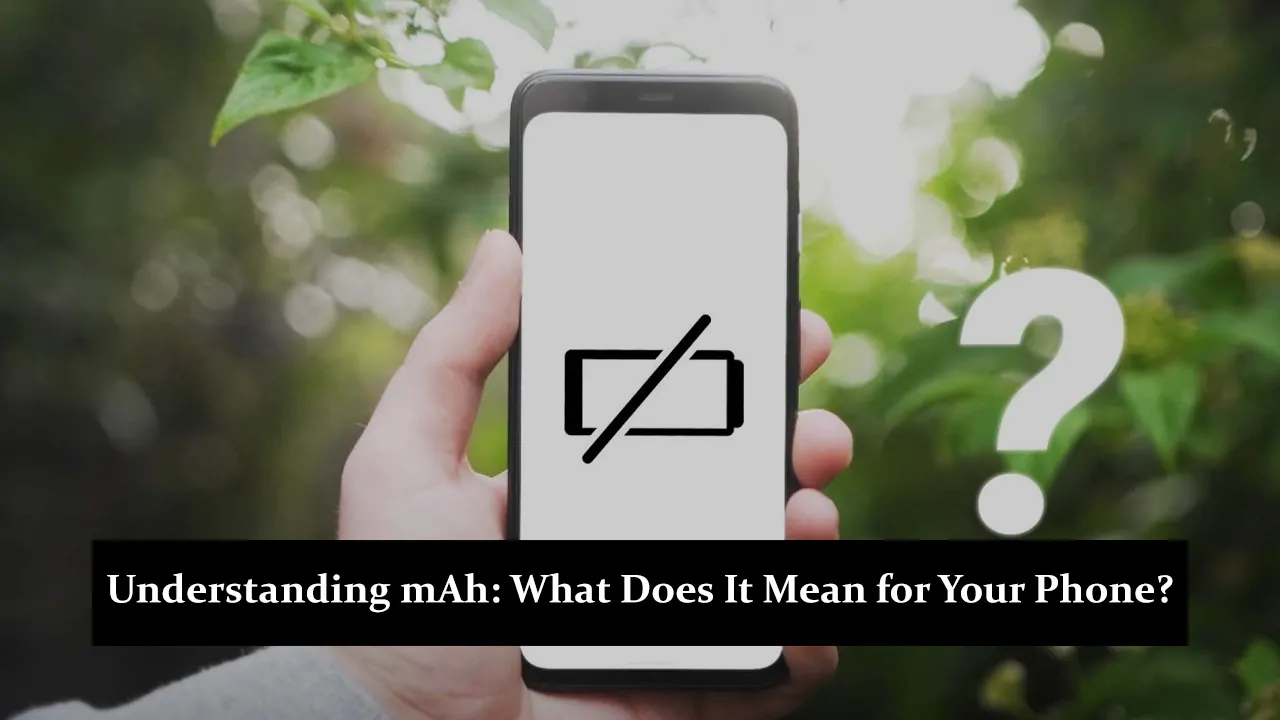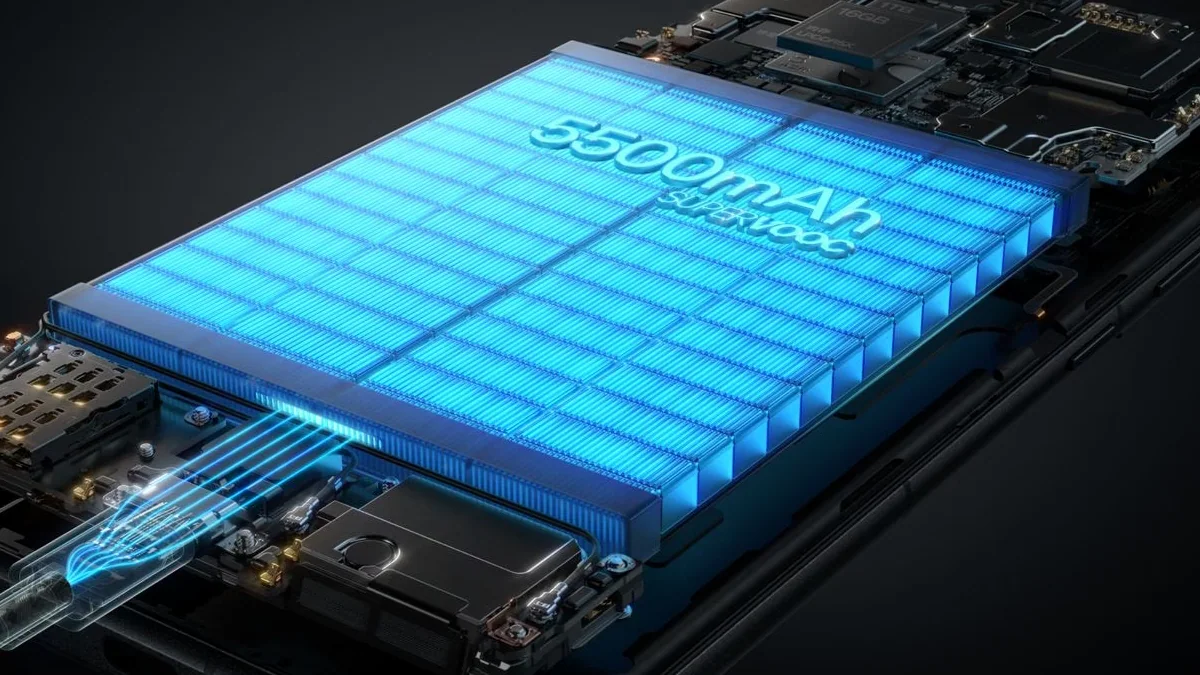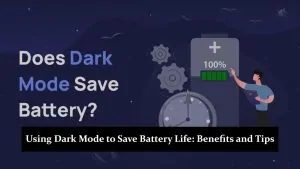Battery life is one of the most important features of any smartphone because it determines how long you can use your phone without needing to recharge. One key term you’ll often hear when discussing batteries is mAh, which stands for milliampere-hour. It measures how much energy a battery can store, similar to how the fuel tank size shows how much gas a car can hold. Understanding mAh is important because it helps determine how long your phone can last before needing a charge. Knowing this can help you choose the right phone based on your usage habits.
What is mAh?
mAh, or milliampere-hour, is a unit that tells us how much energy a battery can store. In simple terms, it’s like the size of a phone’s “fuel tank.” Just as a larger gas tank in a car lets you drive farther without refuelling, a battery with a higher mAh can keep your phone running longer before it needs to be recharged. For example, a mobile phone with 5,000 mAh can hold more energy than one with 3,000 mAh, which can last longer between charges.
How Does mAh Affect Battery Life?
The mAh rating of a battery directly affects how long a cell phone can operate before it needs to be recharged. Generally, a higher mAh means a longer battery life because the battery can store more energy. However, there are other factors determining how long your phone lasts. Bigger screens, powerful processors, and apps that run in the background can drain the battery faster, even if the mAh is high. So, while a higher mAh gives your phone more potential for longer use, how you use the phone also plays a big role in how long the battery lasts.
mAh and Different Types of Phone Usage
Heavy Usage (Gaming, Streaming, and Apps)
The battery drains faster when you use your phone for heavy tasks like gaming, streaming videos, or running power-hungry apps. Even with a high mAh battery, these activities require more energy, meaning your phone might last only a few hours before recharging. For example, a phone with a 4,500 mAh battery might last around 5-6 hours during continuous gaming or streaming.
Light Usage (Texting, Browsing, and Calls)
On the other hand, light activities like texting, browsing social media, or making calls use much less battery. Light usage allows even a phone with a smaller mAh to last much longer. For instance, that same 4,500 mAh battery could last 24 hours or more if you only use your phone for basic tasks like texting and checking emails.
Varying Conditions and Battery Life
The number of hours your phone lasts depends on how you’re using it. A higher mAh battery gives you more flexibility, but your habits will determine how quickly the battery drains. Light users may find their phones last well over a day, while heavy users may need to charge after just a few hours of intense use.
Common Myths About mAh
- Myth 1: Higher mAh Always Means Better Battery Life
While a higher mAh battery can store more energy, it doesn’t always mean your phone will last longer. Other factors like the phone’s hardware and how efficiently it uses power also matter. - Myth 2: mAh is the Only Factor That Determines Battery Life
More than just mAh influences battery life. Software optimisation plays a big role—phones with better power management can last longer even with lower mAh batteries. - Myth 3: All Phones With the Same mAh Will Last the Same
Different phones with the same mAh rating can have very different battery lives. Features like the screen size, display quality, and how power-hungry the processor is can impact how fast the battery drains. - Myth 4: Charging Habits Don’t Affect Battery Performance
How you charge your phone also affects battery life over time. Frequent fast charging, letting the battery drain completely, or overcharging can reduce the efficiency of even high mAh batteries. - Myth 5: mAh Directly Relates to Phone Speed
mAh only tells you about battery capacity, not the phone’s speed or performance. Even phones with high mAh batteries might slow down due to other factors, like an older processor or lack of memory.
Choosing the Right mAh for Your Needs
Choosing the right mAh for your phone depends on how you use it. A battery between 3,000 to 4,000 mAh is enough for a full day for casual users who mostly text, browse, and make calls. Power users who stream videos, play games or use apps heavily should aim for 4,500 mAh or higher to ensure their phone lasts throughout the day without frequent charging. Travellers or those often away from a charger may want batteries above 5,000 mAh for extended use. Matching the mAh to your daily habits ensures your phone stays powered when needed.
mAh in Comparison with Other Battery Features
| Feature | Description | Interaction with mAh |
| mAh (Battery Capacity) | Measures the total energy the battery can store. | Higher mAh gives longer battery life, but other factors also matter. |
| Fast Charging | Allows the battery to charge more quickly than normal. | Complements higher mAh by reducing the time needed to recharge a large battery. |
| Battery Health | Refers to the overall condition and lifespan of the battery. | A high mAh battery can still degrade over time, affecting its long-term performance. |
| Power Optimisation | Software features that help manage and reduce battery drain. | Efficient power management can extend the usage time even for lower mAh batteries. |
| Energy-Efficient Processor | Helps reduce the amount of power needed to run apps and tasks. | A phone with a lower mAh can still last longer if the processor uses power efficiently. |
Conclusion
Understanding mAh is crucial when choosing a phone, as it gives you a sense of how long the battery can last between charges. However, it’s important to remember that mAh is just one part of the equation. Factors like software optimisation, fast charging, and overall power efficiency also play key roles in determining battery life. By considering all these elements together, you can make a more informed decision and choose a phone that meets your daily needs without worrying about constant recharging. A balanced approach to battery features will give you the best experience.





